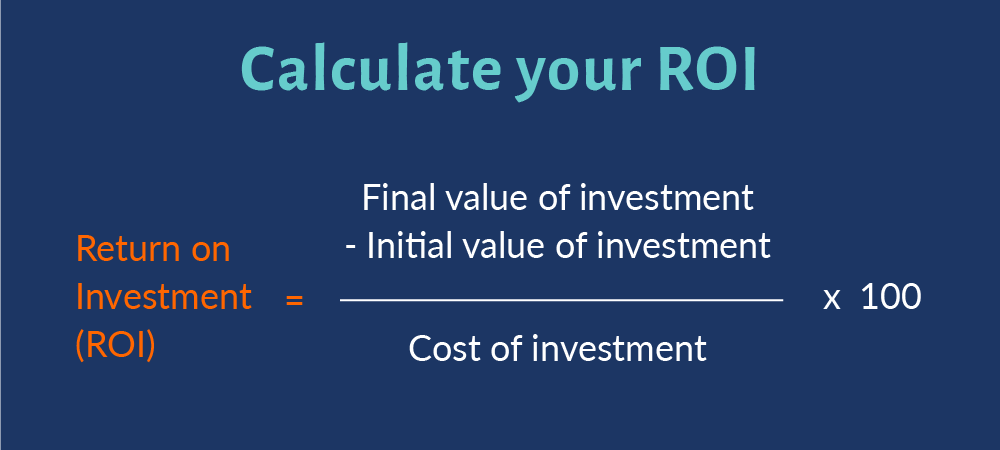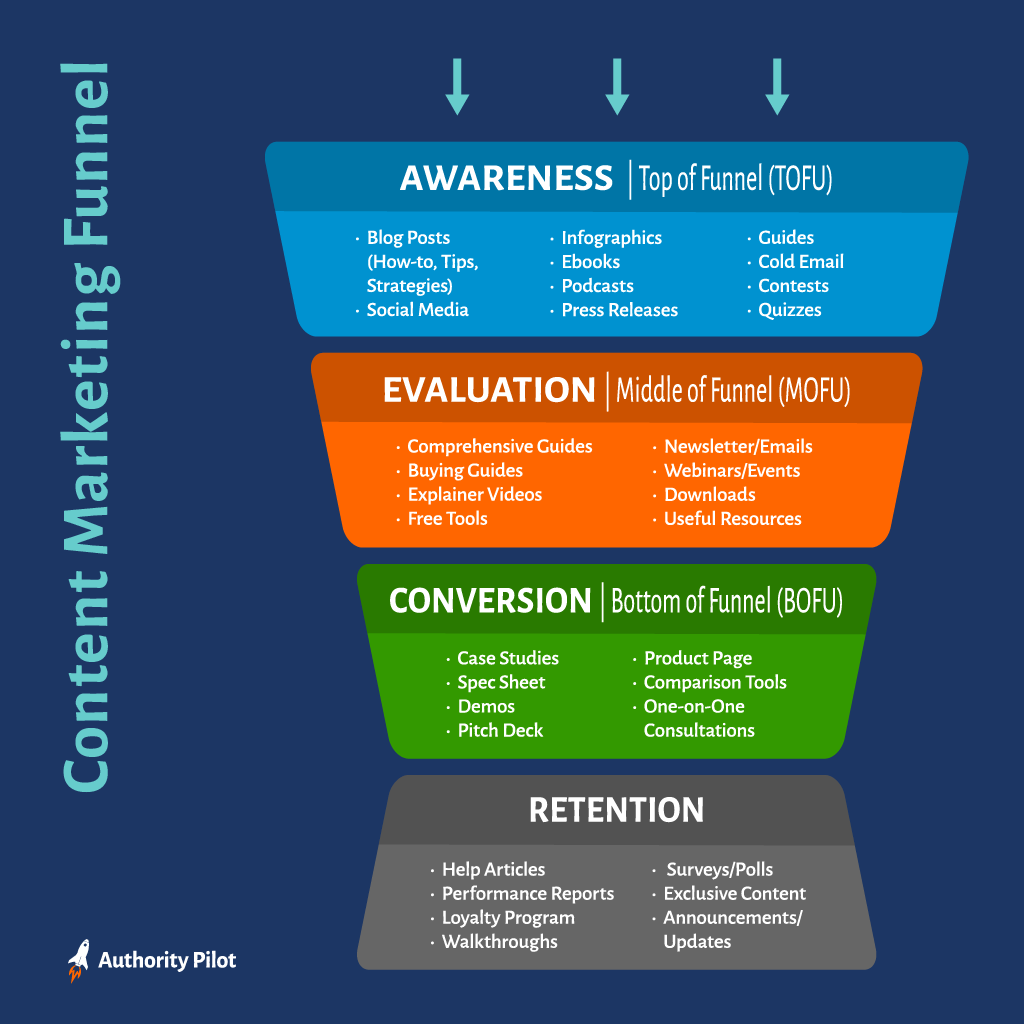
The B2B marketplace is more crowded than its ever been, and it’s common for businesses to struggle in capturing the attention of decision-makers who are overwhelmed by irrelevant or uninspiring content. Crafting a content marketing strategy that resonates with the right audience and drives measurable results is a challenge that many companies face. Without a focused approach, your efforts risk being overlooked, leading to wasted resources, missed opportunities, and a lack of meaningful engagement.
This guide provides actionable insights to help you create a winning B2B content marketing strategy. By leveraging effective tactics such as tailored messaging, diverse content formats, and strategic distribution, you can captivate your audience, build trust, and establish your brand as an industry authority. These proven strategies will empower you to drive quality leads and achieve sustainable growth in your business.
Understanding B2B Content Marketing
Definition and Importance
B2B content marketing involves producing high-quality content in various forms such as blog posts, infographics, case studies, white papers, tutorials, and educational videos to appeal to and address major pain points of B2B consumers (Sprout Social). This approach not only solves problems for B2B consumers but also builds lasting relationships and positions the organization as an authoritative leader in its field.
High-quality B2B content is characterized by being well-written, error-free, and visually appealing. It establishes the B2B organization as a reputable leader in the industry. Providing value to the audience, tailoring to their needs, and distributing effectively across platforms where the target audience spends the most time is crucial for successful content marketing.
Benefits of B2B Content Marketing
Content marketing is highly effective for showcasing expertise and establishing authority in the field for B2B companies. It contributes to benefits like a high ROI for a low-cost channel and content with a long lifespan that continues to yield benefits for months or years after publishing.

Here are some of the key benefits:
- Lead Generation: Effective B2B content drives leads and conversions, engaging prospects throughout the buyer’s journey and encouraging them to convert. The ultimate measure of content success is the impact on lead generation and sales conversions in B2B marketing (OneIMS).
- Audience Understanding: Knowing the audience is crucial. 28% of B2B marketers say their organization is extremely or very successful with content marketing; these top performers most often attribute their success to knowing their audience (79%) (Content Marketing Institute).
- Authority Building: High-quality content helps establish the business as an industry leader, enhancing brand credibility and customer trust.
- Cost-Effective Marketing: Content marketing is a low-cost channel with a high ROI, making it an efficient strategy for long-term growth.
- Longevity: Quality content continues to generate results long after it is published, offering lasting value and sustained engagement.
For a detailed breakdown of benefits and strategies, explore our effective content marketing strategy guide.
| Benefit | Description |
|---|---|
| Lead Generation | Engages prospects throughout the buyer’s journey. |
| Audience Understanding | Knowing the audience attributes to 79% of B2B content success. |
| Authority Building | Establishes the business as an industry leader. |
| Cost-Effective Marketing | Offers a high ROI for a low-cost channel. |
| Longevity | Provides lasting value, with content continuing to yield benefits long after publishing. |
By understanding these key aspects, business owners, marketing professionals, and decision-makers can harness the full potential of a comprehensive B2B content marketing strategy to drive brand growth and generate leads. For more details on content types, formats, and distribution channels, visit our content marketing strategy framework section.
Key Elements for Success
To create a successful B2B content marketing strategy, it is essential to focus on several core elements that serve as the foundation for impactful campaigns. These components include conducting in-depth audience research to understand the needs, pain points, and preferences of your target market. By developing a clear picture of your audience, you can tailor your content to address their specific challenges and goals, ensuring it resonates on a deeper level.
Equally important is recognizing the value of diverse content types and formats. A robust strategy should incorporate a mix of content such as blog posts, white papers, videos, case studies, and infographics to engage different audience segments and cater to varied consumption preferences.
Then there is leveraging effective distribution channels for maximizing your content’s reach and impact. Whether through social media platforms, email marketing, or search engine optimization, using the right channels ensures your content reaches the right people at the right time, enhancing engagement and driving measurable results.
Audience Research
Audience research plays a significant role in the success of B2B content marketing. A report by Sprout Social highlights that 47% of content marketers credit their achievements to thorough audience research. By identifying the needs, challenges, and preferences of your target audience, you can craft content that genuinely connects with them and fosters higher levels of engagement.
Steps for Effective Audience Research:
- Identify target segments: Determine the specific industries, roles, and company sizes you want to reach.
- Gather data: Use surveys, interviews, and analytics to collect information on your audience’s behavior and preferences.
- Analyze insights: Look for patterns and trends to understand what type of content will be most effective.
- Create personas: Develop detailed buyer personas to guide content creation.
Content Types and Formats
B2B marketing campaigns rely on a variety of content formats to effectively connect with their target audience. Incorporating a diverse range of content is essential to addressing the unique needs of your audience and maintaining their interest. Goldcast notes that successful B2B content often includes elements such as digital marketing, webinars, and targeted email campaigns, among other strategies.
Popular B2B Content Formats:
- Blog Posts: Long-form articles that provide in-depth information.
- Whitepapers and E-books: Comprehensive guides on industry-specific topics.
- Webinars: Live or recorded sessions that offer valuable insights.
- Case Studies: Demonstrations of successful implementations or solutions.
- Infographics: Visual representations of data and key points.
- Videos: Engaging and easily digestible format for complex information.
Distribution Channels
To maximize the impact of your content, it’s essential to utilize a variety of distribution channels. Successful B2B content marketers often combine paid social media, organic social media, influencer partnerships, and email marketing to reach their target audiences effectively. According to the Content Marketing Institute, 85% of B2B marketers who use paid distribution channels invest in paid social media advertising to promote their content.
Effective Distribution Channels:
- Social Media: Use platforms like LinkedIn, Twitter, and Facebook to share content and engage with your audience.
- Email Marketing: Targeted email campaigns to nurture leads and stay top-of-mind with your audience.
- Paid Social: Utilize sponsored posts and ads to reach a wider audience.
- Influencer Marketing: Partner with industry experts to amplify your content’s reach.
- SEO: Optimize content to rank higher in search engine results like our SEO content marketing strategy.
Implementing the right mix of content types and distribution channels, backed by thorough audience research, is fundamental for a successful B2B content marketing strategy. For more in-depth strategies, check out our content marketing strategy framework and effective content marketing strategy.
Strategies for Effective B2B Content Marketing
Developing an impactful B2B content marketing strategy involves employing techniques that connect with business owners, marketing professionals, and decision-makers. This section will outline key strategies to enhance the effectiveness of your content marketing efforts.
Incorporating Storytelling and Emotion
Storytelling and emotional engagement are vital components of effective B2B marketing. Research indicates that 62% of B2B marketers find storytelling to be an effective content marketing tactic (Nutcracker).
By humanizing your brand and making your content relatable, you can forge stronger connections with your audience. Here are some ideas to incorporate storytelling into your B2B marketing strategy:
- Share Customer Success Stories: Highlight real-life examples of how your product or service has solved problems for clients.
- Behind-the-Scenes Content: Provide insights into your company’s culture and processes to build authenticity.
- Use Visual Narratives: Incorporate videos and infographics to tell your brand’s story in an engaging way.
- Leverage Employee Stories: Showcase your team’s expertise and experiences to humanize your brand.
- Create Thought Leadership Content: Share your company’s journey, values, and vision to inspire and connect with your audience.

Leveraging Different Content Formats
To effectively engage your audience, it’s important to diversify the content formats you produce and utilize multiple distribution channels to extend your reach. According to Sproutworth, 90% of B2B marketers use social media platforms for organic content distribution, and 73% use email newsletters to share their content.
Here are some content formats to consider:
- Blog Posts: In-depth articles that provide valuable insights and information to your audience.
- Videos: Engaging visual content that can explain complex ideas or showcase products.
- Case Studies: Detailed analyses of how your product or service has benefited clients.
- Infographics: Visual representations of data or processes that are easy to understand.
- Webinars: Live or recorded sessions that offer expert knowledge on relevant topics.
Distribution Channels and Formats
| Content Format | Effective Distribution Channels |
|---|---|
| Blog Posts | Organic Search, Social Media, Email |
| Videos | YouTube, Social Media, Email Campaigns |
| Case Studies | Email Campaigns, LinkedIn, Website Landing Pages |
| Infographics | Social Media, Email Newsletters, Blogs |
| Webinars | LinkedIn, Event Platforms, Email Invitations |
| Podcasts | Podcast Platforms (Spotify, Apple Podcasts), Social Media, Website Integration |
Importance of Audience Alignment
Tailoring content to match the needs and preferences of your target audience is key to generating leads and driving conversions. Successful B2B content should connect with prospects at every stage of the buyer’s journey, guiding them toward making a decision (OneIMS). Follow these steps to ensure your content resonates effectively:
- Research Your Audience: Dive into the preferences, challenges, and decision-making habits of your target audience. This understanding forms the foundation of an effective content marketing strategy.
- Create Tailored Content: Leverage data analytics to segment your audience and craft content that speaks directly to the unique needs and interests of each group.
- Evaluate Performance: Monitor key performance indicators (KPIs) to assess how well your content achieves its goals. Use insights from performance data to refine your strategy further.
- Diversify Distribution Channels: Identify and prioritize the platforms where your audience is most active, ensuring your content reaches them in the most impactful way.
- Engage in Feedback Loops: Actively gather feedback from your audience through surveys, polls, or comments to better understand their evolving preferences and improve future content.
Implementing these strategies in your B2B content marketing approach can significantly improve audience engagement. For instance, strategically using internal links helps guide readers to related topics, increasing their time on your site and overall engagement. To dive deeper into SEO tactics for B2B content, explore Yodelpop’s insights on effective keyword research and producing high-quality content.
We explore more effective content marketing strategy examples in a separate article.
Advanced Tactics and Tools
To achieve significant growth through a well-executed B2B content marketing strategy, it is essential to incorporate advanced tactics and leverage cutting-edge tools. These approaches help refine your efforts, optimize performance, and create meaningful connections with your target audience. By employing innovative strategies, businesses can stay ahead of the competition and maximize the impact of their marketing initiatives.
Account-Based Marketing
Account-Based Marketing (ABM) is a highly targeted approach that personalizes marketing efforts toward individual accounts, rather than employing a broad-brush strategy. Loom’s targeted ABM campaign on LinkedIn achieved an average click-through rate (CTR) of 2% to 3.5% and an average cost-per-click (CPC) of $4 to $10, demonstrating the effectiveness of personalized ads.
By concentrating on high-value accounts, Account-Based Marketing (ABM) enables marketers to customize content and campaigns to address the unique needs and challenges of targeted businesses. This personalized approach improves engagement and boosts conversion rates.
Key metrics for measuring ABM success:
| Metric | Description |
|---|---|
| CTR (Click Through Rate) | Measures the proportion of clicks an ad receives relative to its total impressions. |
| CPC (Cost Per Click) | Indicates the cost associated with each click on an ad, reflecting the efficiency of the campaign. |
| Conversion Rate | Tracks the percentage of visitors who complete a desired action, such as submitting a form or signing up, showcasing the campaign’s effectiveness. |
For more insight, check out 7 ABM examples and lessons from CXL.
Data Analytics for Optimization
Data analytics is a key component in refining and improving your content marketing strategy. By leveraging metrics and analytics, businesses can effectively measure the performance of both B2B and B2C content marketing efforts. Assessing content effectiveness through metrics like creation, engagement, and conversions provides valuable insights that drive optimization and lead to stronger results (Intentful).
Critical data analytics tools:
- Google Analytics: Tracks website traffic and analyzes user behavior to understand audience interactions.
- HubSpot: Delivers robust marketing analytics for monitoring leads and managing customer interactions.
- Tableau: Offers advanced tools for data visualization, enabling deeper and more detailed insights.
For a more comprehensive guide, refer to our effective content marketing strategy article.
SEO Strategies for B2B Content
A robust SEO strategy is essential for ensuring your content reaches the appropriate audience. Considering that 90% of B2B buyers research between two to seven websites before making a purchase decision, implementing effective SEO practices can significantly enhance your online visibility (Main Event Digital).
Essential SEO strategies for B2B content:
- Keyword Research: Discovering the specific keywords and phrases that your target audience frequently searches for.
- On-Page Optimization: Incorporating relevant keywords, well-crafted meta descriptions, and structured headers into your content.
- Link Building: Securing high-quality backlinks to boost domain authority and improve search engine rankings.
For further details on SEO implementation, check out our SEO content marketing strategy.
By effectively utilizing these advanced tactics and tools, we can elevate our B2B content marketing strategy, fostering significant growth and attracting high-quality leads. Adopting Account-Based Marketing (ABM), harnessing data analytics, and refining SEO practices are essential steps toward reaching your marketing objectives.
Measuring B2B Content Marketing Success
To ensure a B2B content marketing strategy is effective, it is important to measure success accurately. This involves defining clear goals, analyzing key metrics, and refining strategies using data-driven insights.
Setting Clear Goals and KPIs
Defining clear goals and key performance indicators (KPIs) is essential for steering content marketing efforts effectively. Below are some common objectives and their associated KPIs to consider:
| Goal | Key Performance Indicators (KPIs) |
|---|---|
| Increase Brand Awareness | Website Traffic, Social Shares, Impressions |
| Generate Leads | Downloads, Form Submissions, Qualified Leads |
| Drive Conversions | Conversion Rate, Sales, Return On Investment (ROI) |
| Enhance Engagement | Time Spent on Page, Comments, Likes, Shares |
Well-defined goals and KPIs enable the tracking of progress and support data-driven decisions to refine a content marketing strategy.
Analyzing Metrics and Insights
Once goals and KPIs are established, the next step is to evaluate key metrics to uncover actionable insights. Below are important metrics to monitor:
Engagement Metrics
- Page views
- Time spent on page
- Bounce rate
- Social shares
Lead Metrics
- Total leads generated
- Lead quality
- Lead-to-customer conversion rate
Conversion Metrics
- Conversion rate
- Sales figures
- Customer acquisition cost
Content Performance Metrics
- Content views
- Average time spent on articles
- Backlinks earned
Regularly reviewing these metrics helps assess the overall effectiveness of a content marketing strategy. Additionally, collecting feedback from the target audience offers valuable insights for continuous enhancement.
Refining Strategies for Better Results
Refining strategies based on collected data and insights is key to driving improved outcomes. Consider the following steps:
- Pinpoint Underperforming Content: Identify content that fails to meet expectations and analyze the reasons behind its performance issues.
- Enhance High-Performing Content: Prioritize updating and promoting content that generates strong engagement and conversions.
- Test New Formats: Introduce innovative content formats, such as videos and interactive elements, to maintain audience interest.
- Utilize Advanced Tools: Employ sophisticated analytics tools like Google Analytics or SEMRush to gain deeper insights.
- Refine Distribution Channels: Adjust the content distribution strategy based on performance metrics to maximize reach and effectiveness.
For additional guidance on improving content marketing strategies, explore our comprehensive guide on effective content marketing strategies.
Establishing clear goals, monitoring key metrics, and refining approaches are essential steps for continuous improvement and achieving measurable success in B2B content marketing. Refer to our content marketing strategy framework for a more structured and actionable approach.
Differentiating B2B and B2C Content Marketing
Target Audiences and Objectives
Recognizing the differences between B2B (Business-to-Business) and B2C (Business-to-Consumer) content marketing begins with understanding their unique audiences and goals.
- B2B Content Marketing: Focuses on engaging other businesses by delivering value-driven content that addresses specific challenges and highlights industry expertise. The primary goal is to foster long-term relationships, generate leads, and nurture connections using detailed information, expert insights, and actionable solutions.
- B2C Content Marketing: Aims to connect with individual consumers by creating emotionally engaging and entertaining content that drives quick conversions. This approach emphasizes short-term interactions, leveraging personal preferences, emotional appeal, and peer recommendations to inspire action.
| Aspect | B2B Content Marketing | B2C Content Marketing |
|---|---|---|
| Target Audience | Businesses, industry professionals | Individual consumers |
| Primary Objective | Generate leads, nurture relationships | Encourage quick conversions |
| Content Focus | Value-driven and solution-oriented | Emotional and entertaining |
Content Tone and Approach
The tone and approach in content marketing vary greatly between B2B and B2C contexts:
- B2B Content Marketing: Adopts a formal and authoritative tone, focusing on data-driven, solution-oriented content that highlights facts, figures, and industry insights to build trust and establish credibility.
- B2C Content Marketing: Utilizes a conversational and approachable tone, designed to evoke emotions, entertain, and inspire, often incorporating an engaging and lighthearted style.
Source: Improvado Blog
Comparison of Tone and Approach
| Aspect | B2B Content Marketing | B2C Content Marketing |
|---|---|---|
| Tone | Formal and authoritative | Conversational and relatable |
| Approach | Data-driven and solution-oriented | Emotional and engaging |
Key Strategies for Each Domain
While B2B and B2C content marketing differ in many ways, they share several core strategies that contribute to success. These include using storytelling, segmenting the audience effectively, maintaining consistent branding, focusing on quality rather than quantity, and emphasizing engagement over direct promotion.
B2B Content Marketing Strategies:
- Storytelling: Develop impactful narratives supported by data and industry insights to demonstrate expertise.
- Audience Segmentation: Customize content for various stages of the decision-making process.
- Relationship Building: Create in-depth content to foster long-term partnerships.
- SEO Strategies: Optimize content to improve visibility on search engines.
B2C Content Marketing Strategies:
- Storytelling: Share relatable stories to forge emotional connections with the audience.
- Audience Segmentation: Design campaigns tailored to specific demographics and personal interests.
- Engaging Content: Use visuals and videos to captivate and retain audience attention.
- Social Media Integration: Utilize social platforms to expand reach and encourage immediate interaction.
| Strategy Type | B2B Strategies | B2C Strategies |
|---|---|---|
| Storytelling | Data-driven with industry insights | Relatable and emotionally engaging |
| Audience Segmentation | Aligned with decision-making stages | Based on demographics and personal interests |
| Content Focus | Emphasis on building long-term relationships | Prioritizes instant audience engagement |
| Platform Utilization | SEO and industry-specific publications | Social media and visually rich content |
To explore more about building an effective strategy, check out our resources on developing a content marketing strategy and explore examples of successful approaches. By grasping the core differences and essential strategies of B2B and B2C content marketing, business owners and marketers can design focused campaigns that drive brand growth and generate valuable leads.
Case Studies and Success Stories
Reviewing real-world examples of successful B2B content marketing strategies offers valuable insights and inspiration for enhancing your own efforts. Here are three standout campaigns to explore: HubSpot and Coca-Cola, Loom’s Account-Based Marketing, and AdvisorStream’s partnership success.
HubSpot and Coca-Cola Campaigns
HubSpot and Coca-Cola exemplify the effectiveness of a well-rounded B2B content marketing strategy. HubSpot provides an array of valuable resources, including e-books, podcasts, case studies, and quizzes, designed to address the needs of audiences at various stages of the marketing funnel (New York Times Licensing).
| Resource Type | Audience Stage | Example |
|---|---|---|
| E-books | Awareness | Inbound Marketing e-book |
| Podcasts | Consideration | The Growth Show podcast |
| Case Studies | Decision | Coca-Cola case study |
| Quizzes | Engagement | Marketing Grader quiz |
HubSpot’s multi-format approach allows them to engage with their audience at every stage of the buyer’s journey, effectively driving both engagement and conversions. Similarly, Coca-Cola leverages content to showcase their brand story and capabilities, strengthening relationships with B2B partners and enhancing brand loyalty.
Loom’s Account-Based Marketing
Loom has successfully implemented Account-Based Marketing (ABM) to engage high-value business clients. By concentrating on specific accounts and customizing marketing efforts to address their unique needs, Loom delivers a personalized experience that deeply connects with potential clients. This approach incorporates targeted content, tailored messaging, and individualized outreach.
| ABM Tactics | Description |
|---|---|
| Targeted Content | Developing content tailored to the unique needs of each account’s industry |
| Customized Messaging | Designing personalized communication for key decision-makers |
| Personalized Outreach | Engaging directly through tailored emails and one-on-one meetings |
The meticulous focus on each target account increases the relevance of the content, leading to higher engagement rates and better conversion metrics. This personalized approach strengthens relationships with potential clients, fostering trust and long-term partnerships.
AdvisorStream’s Partnership Success
AdvisorStream, a prominent content marketing platform, collaborated with NYTLicensing to provide high-quality licensed content tailored to meet the business needs of their audience. This partnership achieved impressive results, including a 200% growth in views for licensed content and a 260% rise in lead captures (New York Times Licensing).
| Metric | Before Partnership | After Partnership | Increase |
|---|---|---|---|
| Content Views | 10,000 | 30,000 | 200% |
| Lead Captures | 500 | 1,800 | 260% |
This achievement highlights the power of strategic partnerships in expanding reach and driving substantial growth. AdvisorStream’s customized approach and commitment to delivering high-quality content allowed them to effectively address their audience’s needs.
These case studies demonstrate the value of a well-planned and executed B2B content marketing strategy. By incorporating diverse content formats, implementing Account-Based Marketing (ABM) tactics, and building strategic collaborations, businesses can unlock significant growth and foster meaningful engagement with their target audiences.
For more examples and actionable strategies, check out our articles on content marketing strategy examples, effective content marketing strategy, and content marketing strategy framework.
Trends and Future Outlook
Examining the future of B2B content marketing reveals key trends and developments that point to significant growth and evolution in the field.
Content Marketing Growth Projections
Content marketing remains a cornerstone of B2B strategies, with 79% of businesses utilizing it to drive lead generation. The market is projected to grow at an annual rate of 16% through 2025 (Intentful).
| Year | Growth Rate (%) |
|---|---|
| 2021 | 14% |
| 2022 | 15% |
| 2023 | 16% |
| 2024-2025 | 16% (projected) |
B2B marketers have experienced significant success with content marketing, including marked improvements in sales and revenue. In 2023, content marketing played a key role in helping B2B marketers achieve their objectives, a notable increase from the 42% of marketers in 2022 who attributed content marketing to revenue growth (OneIMS).
Evolving Strategies and Tools
The evolution of B2B content marketing brings continuous advancements in strategies and tools to enhance its impact. A survey by the Content Marketing Institute (via LinkedIn) highlights significant progress in achieving key objectives such as brand awareness, lead generation, audience nurturing, and revenue growth, all while maintaining a focus on engaging and nurturing target audiences.
Key evolving strategies include:
- Account-Based Marketing (ABM): Customizing content to address the specific needs of high-value accounts leads to more precise and impactful engagement.
- Interactive Content: Utilizing features like quizzes, polls, and interactive infographics enhances audience participation and engagement.
- Video Content: Video remains a dominant tool in B2B marketing, focusing on storytelling and showcasing ideas through compelling demonstrations.
Aligning with Industry Changes
Adapting to industry changes is vital for the continuous success of B2B content marketing. Businesses must remain agile and respond to shifts in technology, consumer behavior, and market dynamics. Essential factors defining successful B2B content marketing strategies include quality, value, relevance, distribution, effectiveness, and continuous improvement (LinkedIn).
Setting clear goals and KPIs is also critical for measuring success and refining strategies. Metrics that provide actionable insights for optimizing content are vital. For more details on setting goals and KPIs, refer to our section on Measuring B2B Content Marketing Success.
To further enhance the effectiveness of these strategies, marketers should utilize data analytics, SEO, and advanced tools. For a comprehensive guide on SEO strategies, visit seo content marketing strategy.
By embracing these trends and aligning with industry changes, B2B marketers can ensure ongoing growth and success in their content marketing efforts. For more detailed examples and templates, explore our section on content marketing strategy examples.
Final Thoughts
B2B content marketing holds immense potential for driving engagement, building lasting relationships, and achieving significant business growth. By focusing on audience research, diversifying content formats, and leveraging effective distribution channels, businesses can create strategies that resonate with their target audience.
Incorporating advanced tactics like Account-Based Marketing (ABM), data analytics, and robust SEO practices ensures precision and scalability in marketing efforts. Whether through compelling storytelling, tailored campaigns, or interactive formats, each element contributes to building trust and fostering meaningful connections.
By staying adaptive to industry trends and continually refining strategies based on measurable insights, businesses can maximize the impact of their content marketing efforts. Embracing these practices will empower organizations to not only meet but exceed their marketing goals, setting the stage for sustained success.







